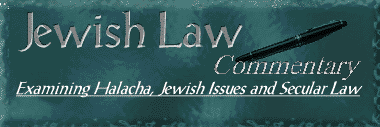

Whose Education Is It Anyway?
Daniel Pollack and David J. Schnall
Whose Education Is It Anyway?
Daniel Pollack and David J. Schnall
If our schools are going to improve, we must move past our reflexive obsession with an outmoded "wall of separation" between church and state, especially when it blocks freedom of choice for parents. The U.S. Supreme Court is now dealing with a case where an affirmative decision can advance quality education. In Zelman v. Simmons-Harris, the Court is weighing the constitutionality of the 1996 Cleveland Scholarship and Tutoring Program, which allows parents within the Cleveland Municipal School District to receive an educational scholarship valued at $2250 per academic year. At their discretion, this grant may be applied to tuition charges at a public, private, or parochial school within the district. Scholarships are awarded by lottery, primarily to families of greatest economic need. Almost all the participants come from households at or near the poverty level.
The Court will confront claims that such programs of school choice have dire Constitutional flaws that compromise the First Amendment's ban on religious establishment. This theme was asserted some 30 years ago in the Nyquist decision which struck down a NY program of assistance to families with children in private schools, and Nyquist is the precedent likely to be applied here as well. Apparently, the Court is concerned that virtually all beneficiaries of the Cleveland program have chosen to send their children to parochial schools. "At the end of the day," in the words of Justice David Souter, "a massive amount of money went to the religious schools in Nyquist, and a massive amount of money goes to religious schools here. That's the sticking point."
Yet public opinion polls conclusively confirm that we are dissatisfied with our public schools. In 1997, the Third International Mathematics and Science Study documented the United States’ last-place ranking in the world. However much we seem to tinker with them, public schools are failing too many of our children. These families are exercising an option that grows not from religious conviction but simply because the Cleveland public schools have proven themselves inadequate to the task of educating their children. Local parochial schools represent their primary alternative.
In truth, the issue is less a matter of interpreting the First Amendment than of supporting an ineffective government monopoly over education. By law, children are assigned to a public school based on their residence. Usually, the government selects the school, not the parents. If families were permitted to send children to their school of choice, population in overcrowded schools would shrink, staff would exhibit greater responsiveness to the concerns of students, and parental involvement would increase. Put succinctly, the public school system would be forced to revitalize itself in the face of healthy competition.
Hopefully, the Court will appreciate that parochial schools can and do perform an important public service, filling needs that government supported systems often seem unable to satisfy, needs that are incidental and irrelevant to religious practice. In more nuanced constitutional language, appropriately crafted school choice legislation can have a “secular purpose,” its primary effect is not to “establish” religion, and there need be no “excessive entanglement” between the government and religious institutions.
Surely, government should set standards for educational competence and quality, but families should select what is best for their children and use a portion of their taxes to support that choice. It’s simple. It’s fair and it’s very much in our national tradition.
_____________________________________________
Daniel Pollack is Associate Professor of Social Work and Adjunct Professor of Law at Yeshiva University. David J. Schnall is Dean of Yeshiva's Azrieli Graduate School of Jewish Education and Administration.

DISCLAIMER